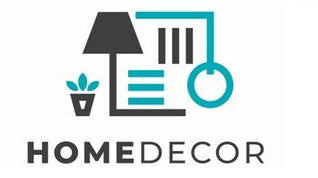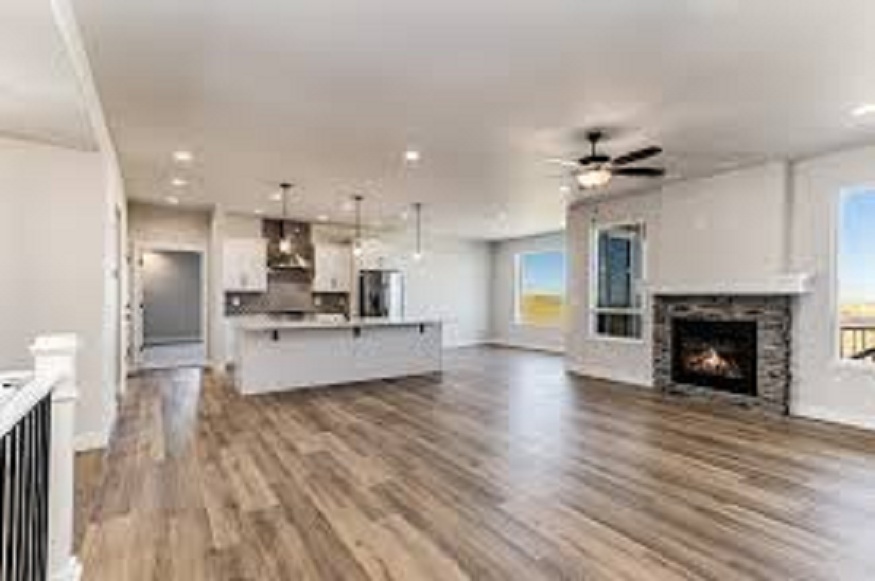For many households across the UK, dogs are more than pets—they’re family. But any dog owner knows that keeping a tidy home with four muddy paws (or more) traipsing through it isn’t always easy. Between shedding fur, accidental messes, and enthusiastic digging at the back door, it’s fair to say that flooring can take quite the beating.
When choosing the best flooring for a dog-friendly home, aesthetics are only part of the equation. What really matters is how well the floor copes with daily wear, how easy it is to clean, and how long it will continue to look good with your dog’s lifestyle in mind. Some materials simply won’t stand up to claws, drool, or the occasional accident, while others make cleaning up after your pet as simple as a quick sweep or mop.
Modern flooring options now offer dog owners far more choice than in the past. There’s no need to settle for tired lino or give up on style just because you have a spaniel with a fondness for puddles. With the right flooring, you can enjoy a home that’s practical, easy to maintain, and still looks fantastic—whether you live in a countryside cottage or a modern city flat.
Durability That Goes the Distance
The most important characteristic for any dog-friendly flooring is durability. Floors in pet homes have to cope with more than just everyday traffic. They endure the constant tapping of claws, sudden sprints around corners, chewing accidents during puppyhood, and the inevitable scratching at the back door.
Some floor types simply aren’t cut out for this kind of punishment. Softwoods, for example, are prone to denting and can be easily scratched by even the smallest breeds. Likewise, high-pile carpets are difficult to clean and can harbour odours, dander, and bacteria if not maintained to a professional standard.
Fortunately, there are several flooring materials that hold up exceptionally well to canine life. Vinyl and luxury vinyl tile (LVT) are often among the top choices for pet owners. These options are scratch-resistant, moisture-proof, and have enough give to be comfortable underfoot—something your dog will appreciate just as much as you. Laminate is another popular pick, but it’s important to go for high-quality options with water-resistant cores if you want it to last.
Tile and stone flooring also score highly in terms of strength, but they can be cold and hard, which might not suit older dogs or breeds prone to joint problems. Using rugs in key areas or under the dog’s bed can soften the experience without compromising on cleanliness.
Cleaning Without the Hassle
Dog owners need floors that clean up quickly. From muddy pawprints and shed hair to the occasional indoor accident, being able to wipe up messes without scrubbing is essential. That’s where sealed, smooth-surfaced flooring excels.
Luxury vinyl tile is especially popular in this regard. It’s non-porous, which means spills can’t soak in, and a quick mop or spray wipe will leave it spotless. Hair doesn’t stick to it, and it won’t absorb moisture, which means less lingering odour. Some modern vinyl flooring also includes anti-bacterial coatings for added peace of mind.
Laminate has similar cleaning advantages, particularly if it’s a modern variety designed with pets in mind. However, you’ll need to take care with standing water, as cheaper laminates may begin to swell or peel if liquids are left for too long. Spot cleaning is easy, but a pet-safe laminate floor cleaner is a wise investment if you want to keep the surface looking its best.
Porcelain tiles are probably the easiest type of flooring to clean when it comes to heavier messes, thanks to their tough glaze and resistance to staining. However, grout lines can sometimes discolour over time, so it’s worth using a darker grout or a sealed one to minimise the effort required to keep it looking fresh.
Coping with Accidents and Water
Whether you’ve got a new puppy or an older dog who sometimes struggles with bladder control, accidents happen. Wet paws, drool, tipped water bowls and the occasional surprise puddle mean your flooring needs to be water-resistant as a minimum—and waterproof wherever possible.
Vinyl flooring, both sheet and tile, is ideal in this regard. It provides a sealed surface that liquid can’t penetrate, so any mess stays on top until you’re ready to clean it. It’s also soft and warm underfoot, which gives it extra appeal in rooms like kitchens and conservatories where your dog might like to lounge.
For those with underfloor heating, waterproof laminate or ceramic tile may be the go-to. These materials won’t warp or become misshapen from moisture, and they’re easy to sanitise—useful if your dog brings in all the smells of the great outdoors.
Natural stone such as slate or limestone can also work well, provided it’s properly sealed. These materials are porous by nature, so a good sealant is essential to stop moisture from soaking in. Once treated, they offer a beautiful, rugged look that’s well-suited to country homes, especially if you’re dealing with more than one muddy pup at a time.
Keeping Claws and Scratches at Bay
Even well-groomed dogs can cause scratches, especially if they enjoy running around the house or tend to slide on hard surfaces. A floor’s scratch resistance depends on the hardness of its surface, the thickness of its protective layer, and how well it hides wear over time.
Luxury vinyl tile with a strong wear layer is one of the best options when it comes to scratch resistance. It holds up well against claws, doesn’t scuff easily, and tends to show less wear thanks to textured or patterned finishes that disguise marks.
Laminate flooring can also perform well in this area, particularly thicker boards with a high AC rating (which reflects durability). Lighter colours and wood-effect textures help hide any small scratches that do occur. It’s worth remembering that placing rugs or mats at doorways or near feeding stations can reduce wear in high-traffic areas, no matter what flooring you choose.
Wood flooring is a more complex choice. Engineered hardwood offers better resistance than solid softwoods, but it can still show scratches over time. If you love the look of wood, choosing a distressed or matte finish can help mask marks and give the floor a characterful appearance even with daily use.
Comfort and Safety for Your Dog
Your dog’s comfort matters just as much as your convenience. Hard, slippery floors can be difficult for older dogs or those with mobility issues. Breeds with hip dysplasia or arthritis need a bit of grip and cushioning underfoot to stay safe and comfortable.
Textured vinyl and laminate floors provide a good balance between ease of cleaning and slip resistance. Some modern products are designed specifically to reduce slipping, which can help nervous or ageing dogs feel more secure as they move around the house.
If you opt for tile or stone, it may be worth combining it with a few strategically placed runners or anti-slip mats. These can help your dog navigate the home with confidence, and they’ll also catch any water drips near bowls or beds.
Even with a non-slip floor, trimming your dog’s nails regularly and keeping paws clean will go a long way toward preventing slips and preserving the surface of your flooring.
Aesthetic Options That Suit Your Home
Living with a dog doesn’t mean compromising on style. The best pet-friendly floors now come in a wide range of finishes, colours, and patterns that can complement traditional or contemporary interiors alike.
Luxury vinyl tile can replicate everything from rustic wood planks to modern stone or abstract concrete designs. Laminate flooring comes in hundreds of finishes, from Scandinavian whitewashed boards to warm oaks and greys. Even porcelain tile can be styled to resemble wood or stone, giving you the look you want with the performance you need.
The trick is to choose a finish that’s not only in keeping with your home but also practical. Mid-tones and textured finishes tend to be more forgiving when it comes to pet hair, dust, and minor scuffs. While dark floors look sleek, they often highlight fur and muddy footprints more easily—especially if you have a light-coloured dog.
Neutral tones with natural patterns or grain offer a timeless look that stays fresher for longer, even in busy households. This means less cleaning, less stress, and more time enjoying your dog’s company.
Thinking Long-Term and Getting the Installation Right
Installing new flooring is an investment, and it’s worth doing properly—especially in homes with pets. Choose a product that comes with a good wear warranty and work with fitters who understand how to install it correctly, particularly around the edges where liquid might seep in.
For areas prone to water, like kitchens and utility rooms, consider sealed joins or floors that click together tightly with no need for glue. If you’re installing tile, grout choice and sealing are key. With vinyl or laminate, using underlay that adds a bit of warmth and soundproofing can improve comfort for both you and your dog.
It’s also worth considering the lifecycle of the flooring you choose. Some materials can be refinished or replaced in sections, while others will need complete replacement once worn. Choosing something that’s easy to maintain and won’t show its age too quickly is always a good call in a dog-friendly household.
Finding the Right Balance
Choosing flooring as a dog owner is all about balance. You want something that’s durable but stylish, easy to clean but comfortable, and affordable without cutting corners. Fortunately, modern materials offer plenty of options that tick all the right boxes.
With a bit of planning, it’s entirely possible to create a home that feels calm, looks smart, and stands up to the happy chaos that dogs can bring. Whether you’re dealing with a boisterous Labrador, a teething puppy, or a sleepy spaniel who sheds all year round, there’s a floor out there that will make your life easier—and your home cleaner.

